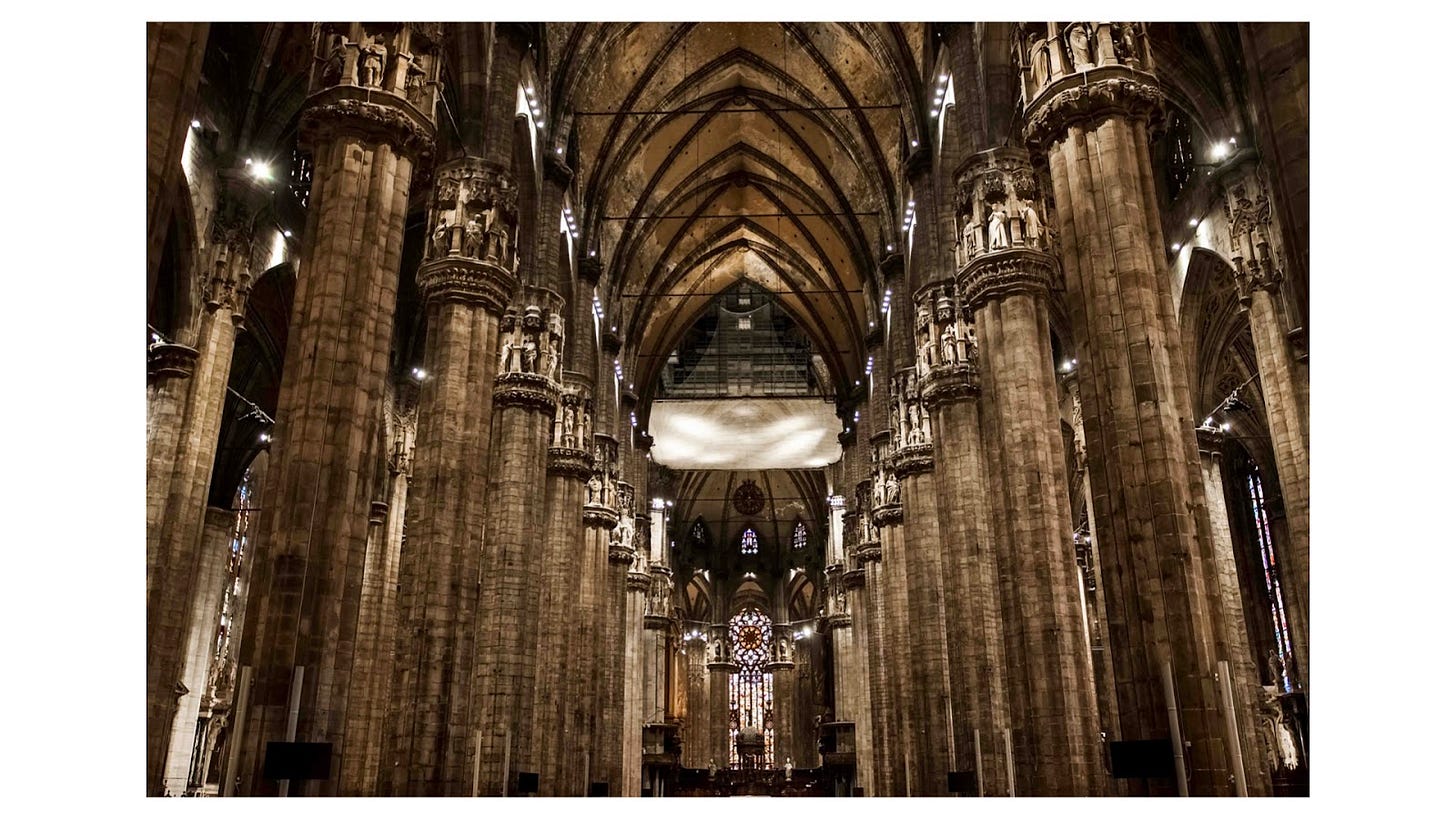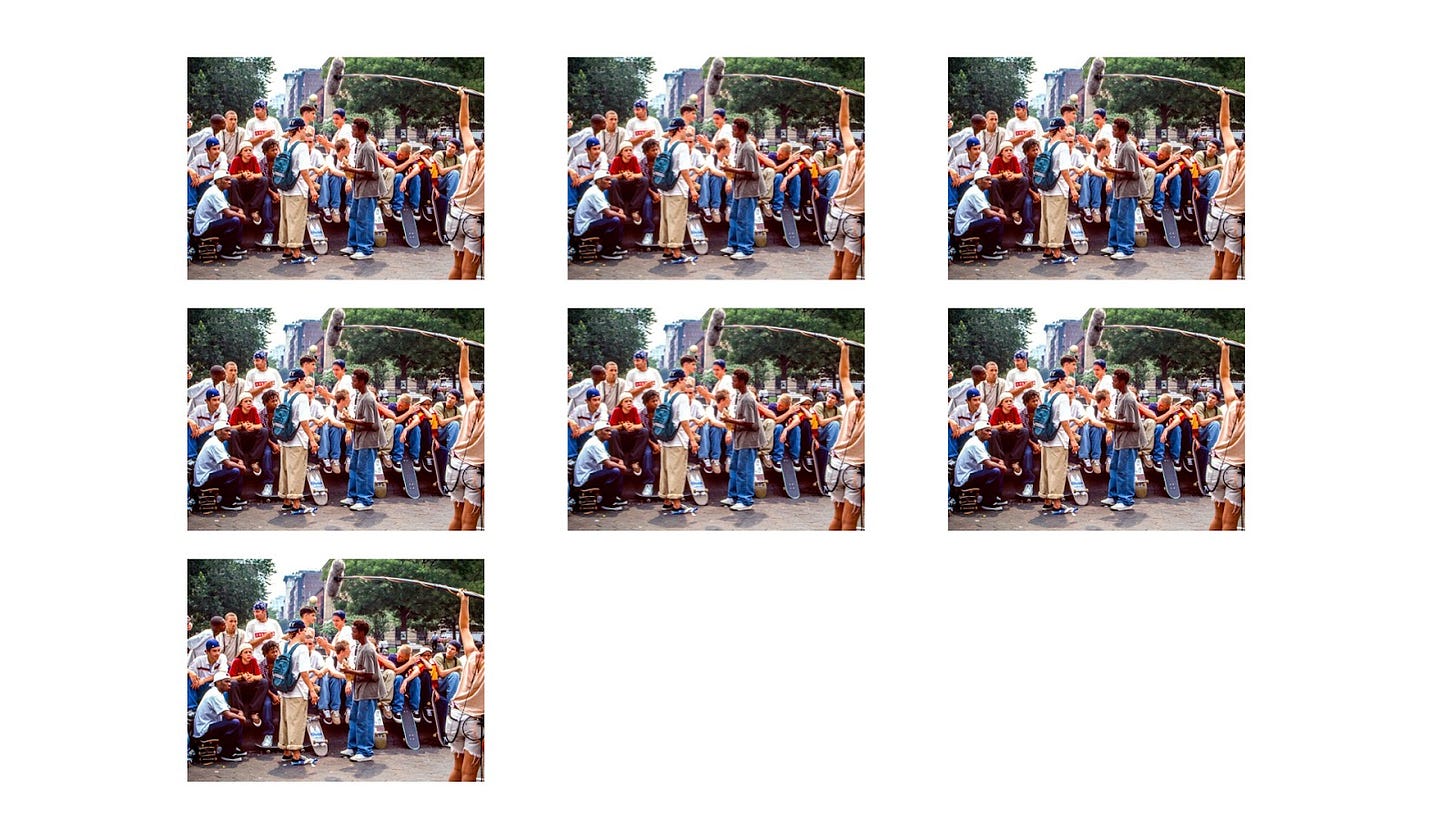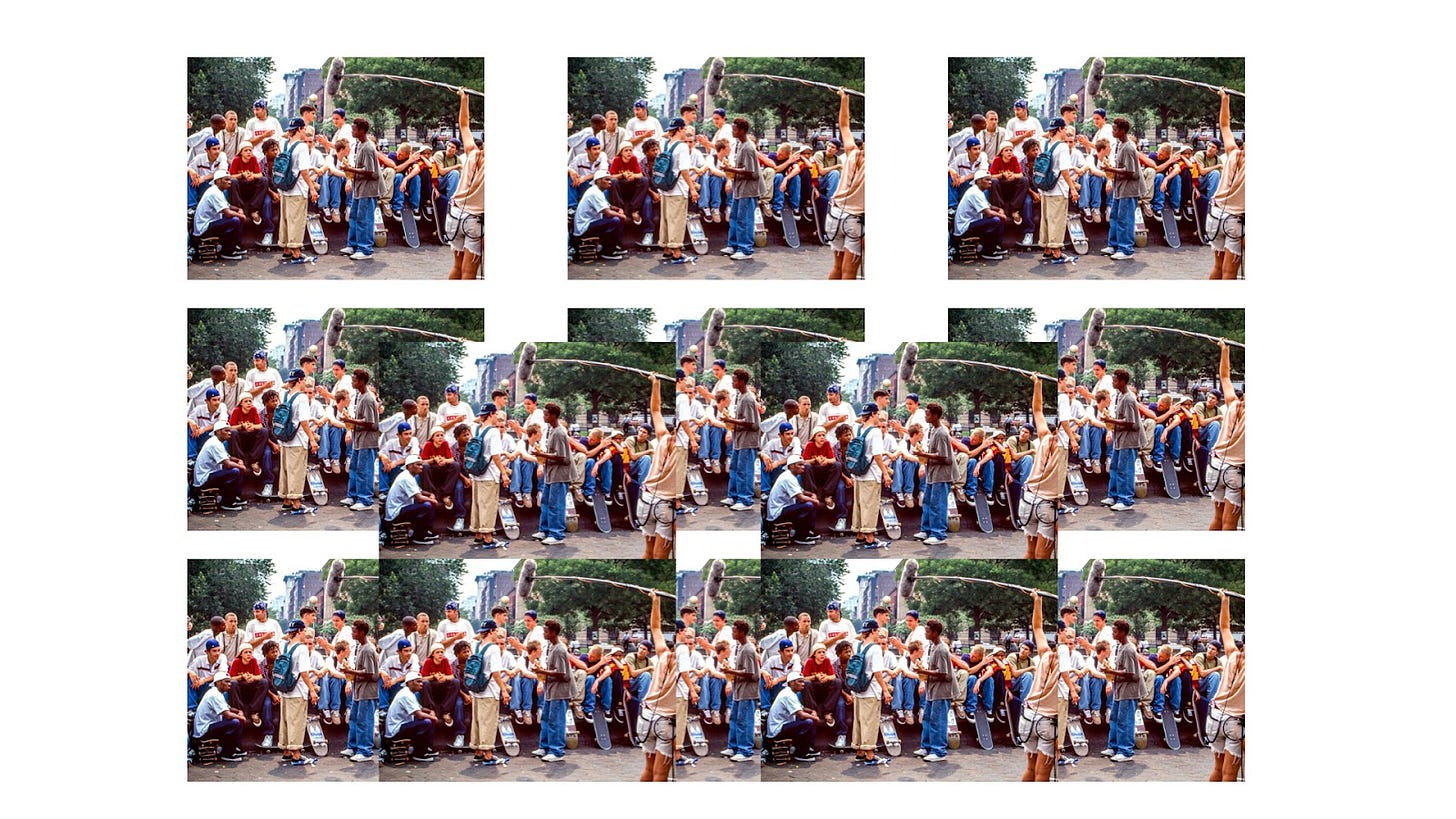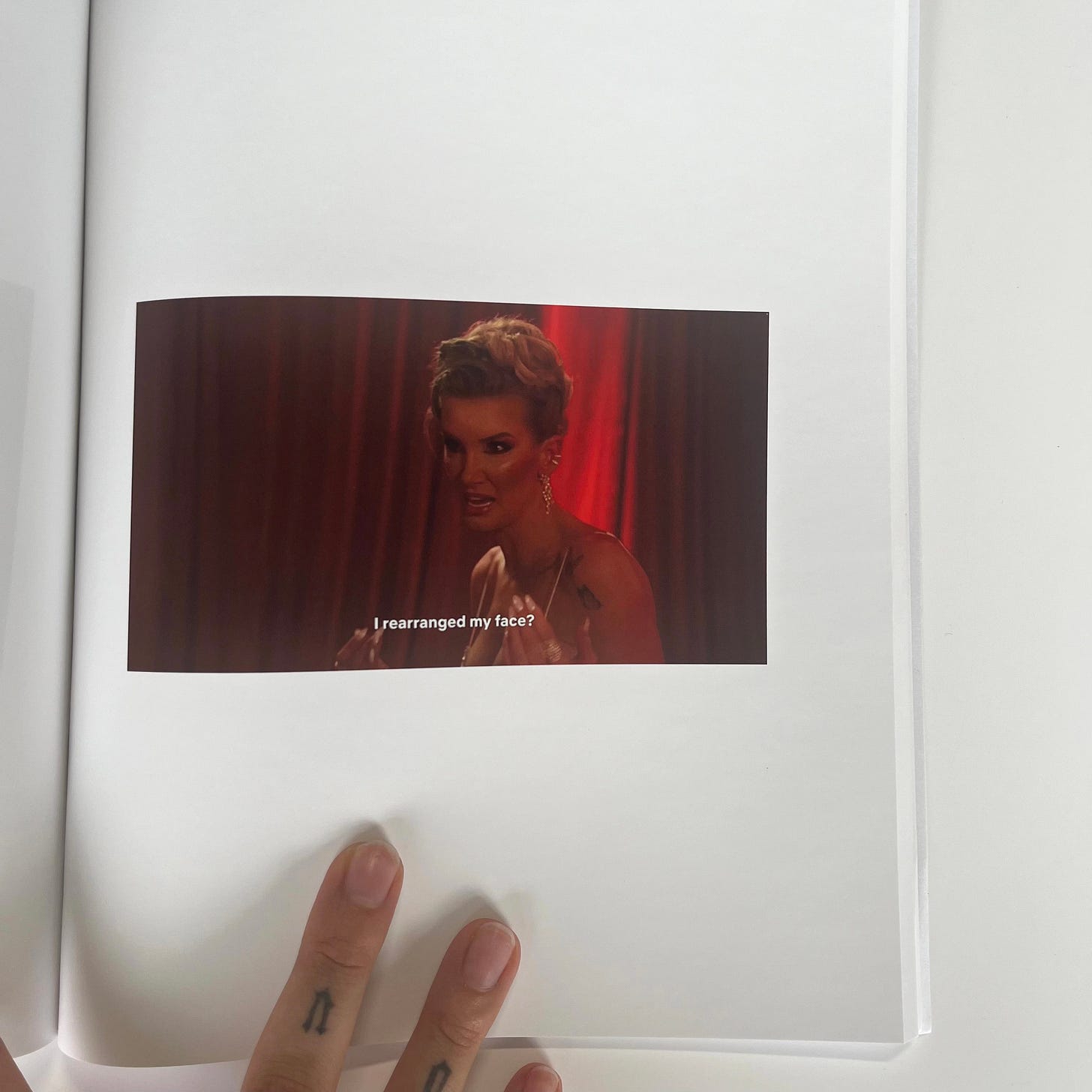When we start a creative project, we face a fork in the road without realizing it: is this a practice or is it a cathedral?
A cathedral is something we want to make perfect — intricately carve it over time. To make a cathedral, we lock ourselves away until the work is just right, then pull back the curtain to show the world what we’ve been working on. The dream of the cathedral is that after working in isolation, the world will celebrate the work and see us in whatever ways we most wish.
The alternative to a cathedral is a practice where you don’t hold back the work for a grand reveal, you bring it into public space as soon as possible. The act of performance creates the space and feeling of the work, even in unfinished forms. A practice can create a temporary, metaphysical cathedral.
The practice and the cathedral frame is a riff on an influential piece of early internet writing called “The Cathedral and the Bazaar” (1997) by Eric S. Raymond about the early history of the web and software industry. The piece concludes there are two models through which software is built: the cathedral — carefully planned closed systems by small teams of engineers — and the bazaar — open source software models that encourage contributions from everyone.
The two models are seen as in opposition, but they’re more fluid than they first appear. As Raymond writes: “One can test, debug and improve in bazaar style, but it would be very hard to originate a project in bazaar mode.” The bazaar is where the work gets better. The cathedral is where ideas begin.
The software bazaar brings code into public so others can contribute and make it stronger. A creative practice reveals what works and what doesn’t through the act of iterative performance. How you feel, what parts you like and don’t like, and what others think (if you wish) are energetic guides to how the work can evolve.
Cathedrals and practices are interconnected. I wrote a book that was my own cathedral — This Could Be Our Future — but it was the practice that came out of it — exploring ideas with people in living rooms and intimate settings through a project called The Bento Society — that proved more personally meaningful.
When we start a practice and keep doing it, something else can happen: it can evolve into a structure and system so strong that other people can use and expand on it. With repetition, practices can become cathedrals. Shared spaces and rituals that become institutions of their own.
There is risk in being all practice and no cathedral. As we explored in the artist and the inner retreat, secluding ourselves as creative people is critical. Without time spent in willed introversion, we risk treading water and missing out on deeper growth and breakthroughs.
Most challenging is when we approach projects as cathedrals over long periods of time only to discover they have not taken the shape we first hoped. It’s emotionally and creatively draining to be trapped by a mostly finished project we can’t pull off as planned. But it’s possible to turn a cathedral into a practice — releasing parts iteratively over time — so that it can finally see the light of day.
The most important step in all cases is simply to release. Releasing unlocks all other outcomes. We never know what connections, opportunities, learnings, and new directions a release will unveil. What starts as a release can grow into a catalog of friends, creations, and lessons learned. It’s the long practice of the creative life that builds the grandest cathedrals of all.
An earlier version of this piece first appeared in “Nine Creative Meditations” (Metalabel 013).
Featured Release
“Hey. Honestly, I’m just… I don’t know.”
By Zarina Nares
Art Book
8 x 10, 132 pages
10 editions
Hey. Honestly, I'm just...I don't know. is a small-run book by the artist Zarina Nares that sequences still images from the reality TV show Selling Sunset into a commentary on how women target each other’s insecurities when expressing anger. Only a few of the limited run of editions remain.
Earlier this week we spoke with the NYC-based artist about the work and what’s behind it.
METALABEL: Can you tell us about this project and how it started?
ZARINA: Reality TV has always been a part of the media I consume. Early MTV, early VH1, and the Kardashians were very much part of my middle school experience. I’ve always been interested in watching people express intense emotions on TV. Anger on TV is so normalized. When you really slow down and watch — there's a lot of anger there.
This book is specifically these women fighting at a party and saying awful things to each other. That's such a norm on reality TV, to see women in these angry states. That's not something that only exists in reality TV, unfortunately. But reality TV lets us sit back and watch. An opportunity to look at how people interact.
METALABEL: There’s many layers of media in this release: screenshots of a reality TV show on a streaming service printed in a book. What happens when we shift mediums?
ZARINA: It creates an opportunity for you to see something differently and have a different kind of experience. There’s a lot of value in transferring something from its original context into a different one. We appreciate it differently. One of the other books I'm working on is all these stills of Real Housewives fights. They start to look like Renaissance paintings. They become really beautiful. There's this funny thing where a lot of the mannerisms become the same. There's a lot of finger pointing and glass throwing.
METALABEL: You made 10 editions of this. Why the limited run?
ZARINA: I liked the idea of making small books that are accessible artworks. I’m not trying to make a ton of things or sell a ton of copies. I wanted to make it feel special.
METALABEL: What got you interested in Metalabel?
ZARINA: I struggle with my creative practice and how to exist within a capitalist framework. One feels like the antithesis of the other, but it’s complicated when you’re trying to critique these things in your work and also survive. I appreciated a lot of the content that you guys were posting, and I bought The Creative Independent zine. I like that there are spaces like this that are cool and well-intentioned.
Thank you to Zarina for taking the time to speak with us. Explore her Metalabel debut here.
Celebrating the Metalabel network
This week saw a few big announcements in the Metalabel family:
Metalabel creator book deal. Ludwig Hurtado, creator of the Metalabel-released cookbook-zine Play and an editor at The Nation, announced that he’s signed a book deal for a new project called Bad Foodies that also explores the world of food. Congrats to Ludwig!
YACHT summer. YACHT’s New Release, available only on Metalabel in physical form, began debuting tracks from the album (which is great!) on streaming services this week. Go YACHT!
Austin branches out. Our friend and Metalabel cofounder Austin Robey announced a new project this week called Subvert that aims to become a collectively owned Bandcamp competitor. Congrats to Austin! We’re rooting for him and closely following along.
Peace and love,
Metalabel











I love the idea of turning a cathedral into a practice. thank you
Great piece.